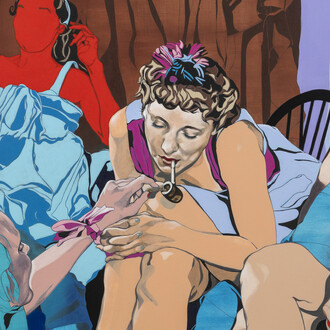Sandra Mujinga takes over the basement of the Stedelijk with her most ambitious work to date. Skin to skin is a compelling installation of 55 sculptures, light, and sound. Mujinga is a prominent name in the contemporary art world: groundbreaking and radically contemporary.
Deep beneath the Stedelijk, a universe of shadows awaits
Mujinga transforms the Stedelijk’s lower-level gallery into a stark, otherworldly realm with Skin to skin. Sound, light, mirrors, and sculptures conjure an unearthly space where 55 identical figures occupy the space. Mujinga investigates concealment through multiplication. Identical at first glance, their multiplication could evoke a single form in transformation—perhaps reflecting different stages in a single body’s life—or suggest a hidden society, or even an entirely new species. They become mute witnesses to a speculative or dystopian world.
In Skin to skin, Mujinga’s otherworldly space vibrates to the artist’s compositions of light and sound. Mutating green light plunges us into a shapeshifting landscape. Reality bends and warps. Skin tones disappear, fabrics gain another texture, shadows pulsate. From time to time, Mujinga’s soundscape grounds the space with an enveloping electronic presence.
Layered content, multiple meanings
Mujinga’s hybrid creatures recall avatars – almost human, eerily alike, like echoes of a single being. In Skin to skin, she uses science fiction to explore what happens when our identities are copied and scattered across digital space. Her creatures ask: who are you when your ‘self’ is copied, multiplied, or turned digital? And when you're seen everywhere, can you still be seen at all—or do you end up hidden in plain sight? At the same time, her installation challenges how Black bodies are perceived—constantly watched and under surveillance, yet rarely truly acknowledged or represented in public spaces or positions of power. This tension lives within her sculptures. Like bodyguards, her towering, humanoid figures give off a feeling of both protection and threat. Through them, Mujinga reveals the uneasy balance between being looked at and remaining invisible.
















